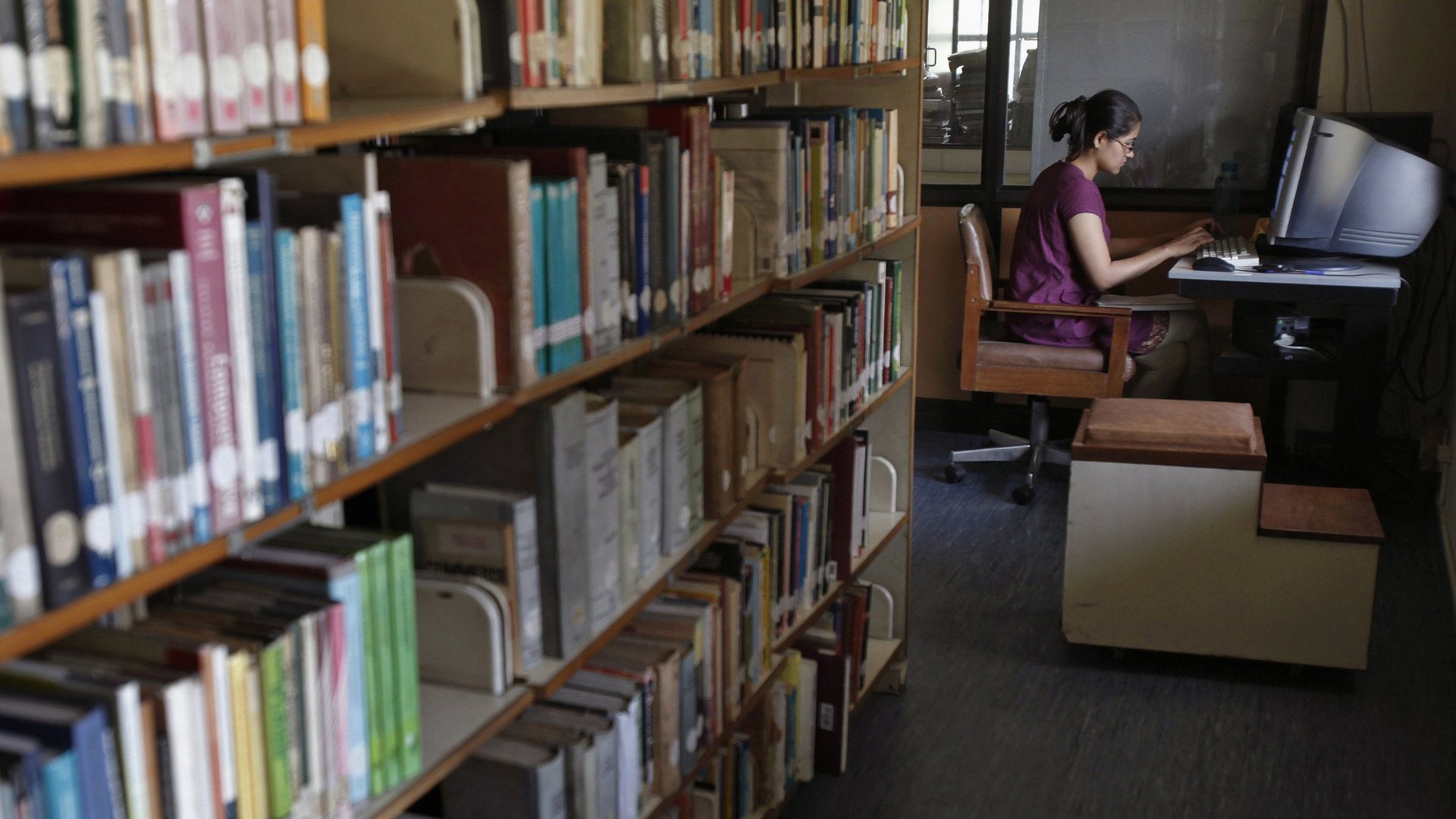How India, Rwanda, and El Salvador are solving the biggest problem in online education
Massive open online courses have quickly fallen out of favor—initially thought to be the savior of higher education, the huge classes are now its punching bag. Critics of the free online courses point to low completion rates, a devaluation of degrees, the displacement of professors, and an absence of necessary classroom time. But a more effective application of the standalone courses is taking root, notably outside of the US.


Massive open online courses have quickly fallen out of favor—initially thought to be the savior of higher education, the huge classes are now its punching bag. Critics of the free online courses point to low completion rates, a devaluation of degrees, the displacement of professors, and an absence of necessary classroom time. But a more effective application of the standalone courses is taking root, notably outside of the US.
It’s called blended learning: a combination of online education and in-class instruction.
In Bolivia, South Korea, and Indonesia, a pilot program found that when an online course was paired with a weekly discussion, completion rates were higher (40%) than for those who only took the online course (10%, which is also Coursera’s average completion rate).
In New America’s Weekly Wonk blog, Anya Kamentz explores how MOOCs are being paired with local education systems in India, Rwanda, El Salvador, and other emerging markets. She writes:
Research shows that blended learning, combining face-to-face contact with online work, is generally superior to either mode used alone. The emergence of ultra-affordable blended-learning degree alternatives based on free online resources just might be the “leapfrog” solution that allows nations full of undereducated young people to move into the middle classes.
According to data from last year, almost three-quarters of students enrolled in Coursera were outside of the US with the majority in the BRICs. While the rise of MOOCs has put pressure on universities in the developing world to improve, their rapid adoption may allow poor education sectors to persist.
In the US, new studies show that integrating a single, or even multiple, MOOCs into a traditional university class gives students the opportunity to learn across various media and access a broader academic community. The turn toward blending learning and MOOCs is only logical—it was research on blended learning that gave rise to the development of MOOCs in the first place.
Now, Coursera is offering a MOOC on teaching blended-learning, with the hopes of exposing thousands of educators to the new technique.